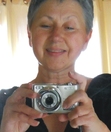How Did Neanderthals Bury Their Dead?
I’ve been fascinated by Neanderthals ever since I read that we, as in Homo Sapiens, actually share some of their genes. The fact that we still retain some of those genes means that there was a fair bit of interbreeding happening. And guess what, according to a Wiki article I read, red hair and a tendency towards sunburn could be a Neanderthal trait!
But trying to understand how an extinct group of, well, people lived involves more than just genomic sequencing. Now, thanks to Jacqui Murray’s tireless research and vivid storytelling, I know a lot more about Neanderthals than just our shared DNA. Jacqui’s new series is called Savage Land, and I’ll provide links at the end of this post.
Getting back to Neanderthals, what’s so important about burying the dead? And what does it tell us about Neanderthals? I asked Jacqui, and this is what she said:
Burying the dead is a practice long considered exclusive to Homo Sapiens--our kind–but within the last decade (maybe longer), attitudes have changed. Mounting evidence indicates that Neanderthals buried their dead possibly with care, empathy, and a belief that the end of their life might be the beginning of something else.
Let’s do a quick exploration of the facts behind Neanderthal burials and then some evidence that might point to a belief in a hereafter:
Burial practices
Neanderthals, who we now accept were cognitively advanced, understood that burying the dead protected others of their species from diseases carried by dead bodies and from predators scavenging the bones of former loved ones.The care given dead suggests the body may have been important in Neanderthal society.Most individuals were placed in graves, be they natural grooves in the ground sized for a body or purposefully dug holes.Bodies seem to be buried soon after death before scavenged by predators or the elements.In one case, an existing channel in the ground was deepened to accommodate the body, something that would have taken considerable effort on the part of the Neanderthal tribe.Here are details about how they interred bodies
Was death the start of something else?
One Neanderthal child was laid on its right side and buried within a small niche in the cave wall, with a red deer maxilla on its pelvis.Several children were laid into depressions, possibly with flint scrapers that could be considered ‘grave goods’.One of the most famous Neanderthal child burials was a 70,000 year old grave in a remarkable state of preservation. It consisted of a child deposited in a natural depression on its stomach with a hand to its head and legs bent at 90 degrees, then covered with soil.At least 30 intentional burials have been found. Some possibly included grave goods.An Iraqi cave has become known as the “flower burial” because of pollen grains clumps from adjacent sediments found in the grave as though intentionally buried with the child.These are a few examples found to indicate maybe Neanderthals did believe in some sort of a life after death that they wanted their formerly loved ones prepared for:
It is impossible to determine if Neanderthals had any beliefs about death, but it is clear that they cared for their dead.
That bit about caring for their dead really resonates with me because it mirrors the best of Homo Sapiens. I hope you enjoyed this insight in Neanderthals, and appreciate how much research went into Jacqui’s books.
As promised here is some info. about Jacqui and the Savage Land series:

Jacqui Murray is the author of the popular prehistoric fiction saga, Man vs. Nature which explores seminal events in man’s evolution one trilogy at a time. She is also author of the Rowe-Delamagente thrillers and Building a Midshipman , the story of her daughter’s journey from high school to United States Naval Academy . Her non-fiction includes 100+ books on tech into education, reviews as an Amazon Vine Voice and a freelance journalist on tech ed topics.
Savage Land is the third prehistoric man trilogy in the series, Man. Vs. Nature.Written in the spirit of Jean Auel, Savage Land explores how two bands of humans survived one of the worst natural disasters in Earth’s history, when volcanic eruptions darkened the sky, massive tsunamis crossed the ocean in crushing waves, and raging fires burned the land. Each tribe starring in the story considered themselves apex predators. Neither was. That crown belonged to Nature and she was intent on washing the blight of man from her face.
Where to find the Savage Land series:Endangered Species —Print, digital, audio available: https://www.amazon.com/Endangered-Species-Savage-Land-Book-ebook/dp/B0DJ9Y7PQ8/ref=sr_1_1?sr=8-1
Badlands —digital on presale now: https://www.amazon.com/Badlands-Savage-Land-Book-2-ebook/dp/B0DFCV5YFT/ref=sr_1_1?sr=8-1
Jacqui’s blog is one of my favourite places to hang out, but you can find her in lots of other places as well:
Amazon Author Page: https://www.amazon.com/Jacqui-Murray/e/B002E78CQQ/
Blog: https://worddreams.wordpress.com
Pinterest: http://pinterest.com/askatechteacher
X: http://twitter.com/worddreams
Website: https://jacquimurray.net
And that’s it. Cheers from Downunder,
Meeks



